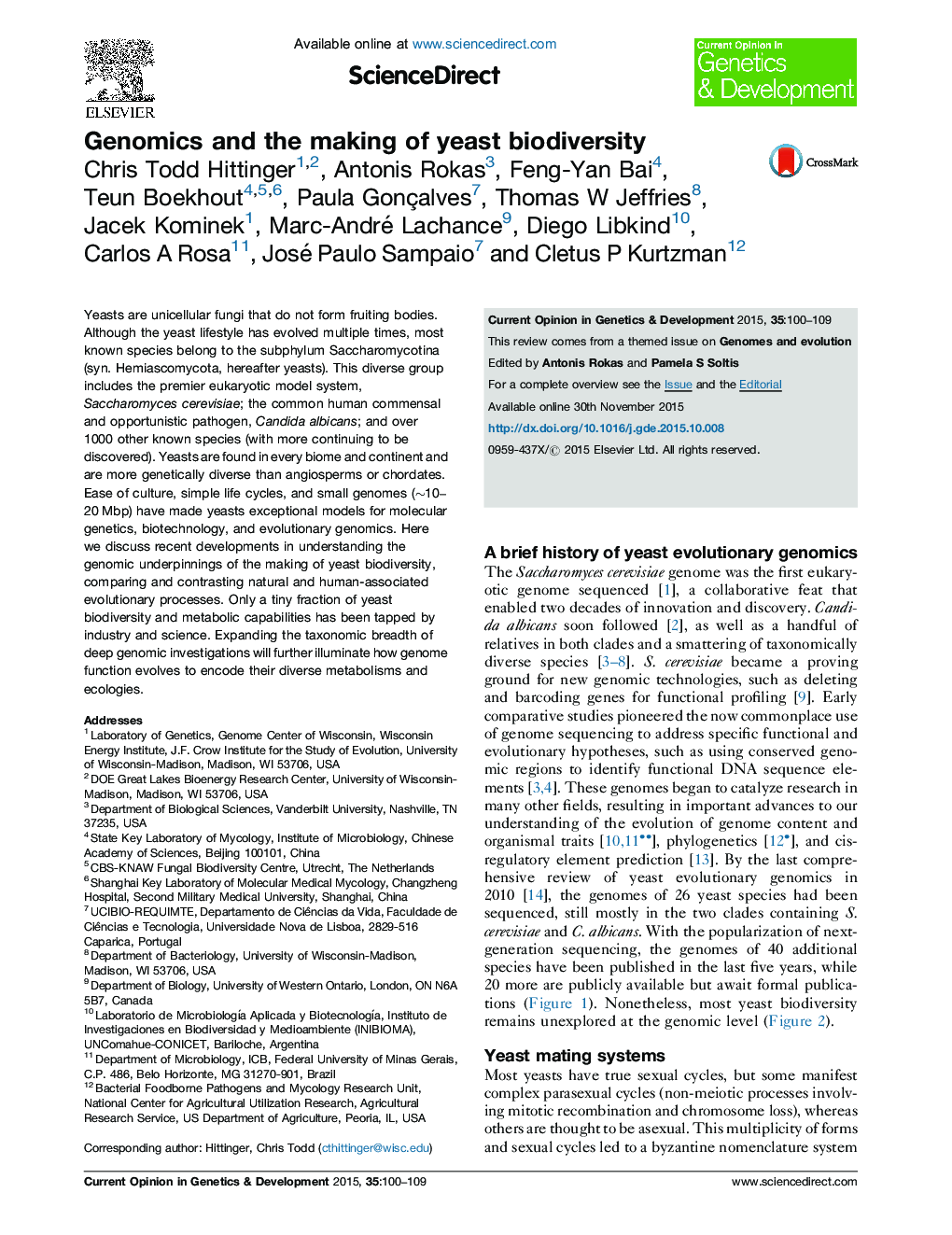| Article ID | Journal | Published Year | Pages | File Type |
|---|---|---|---|---|
| 5893224 | Current Opinion in Genetics & Development | 2015 | 10 Pages |
Yeasts are unicellular fungi that do not form fruiting bodies. Although the yeast lifestyle has evolved multiple times, most known species belong to the subphylum Saccharomycotina (syn. Hemiascomycota, hereafter yeasts). This diverse group includes the premier eukaryotic model system, Saccharomyces cerevisiae; the common human commensal and opportunistic pathogen, Candida albicans; and over 1000 other known species (with more continuing to be discovered). Yeasts are found in every biome and continent and are more genetically diverse than angiosperms or chordates. Ease of culture, simple life cycles, and small genomes (∼10–20 Mbp) have made yeasts exceptional models for molecular genetics, biotechnology, and evolutionary genomics. Here we discuss recent developments in understanding the genomic underpinnings of the making of yeast biodiversity, comparing and contrasting natural and human-associated evolutionary processes. Only a tiny fraction of yeast biodiversity and metabolic capabilities has been tapped by industry and science. Expanding the taxonomic breadth of deep genomic investigations will further illuminate how genome function evolves to encode their diverse metabolisms and ecologies.Current Opinion in Genetics & Development 2015, 35:100–109This review comes from a themed issue on Genomes and evolutionEdited by Antonis Rokas and Pamela S SoltisFor a complete overview see the Issue and the EditorialAvailable online 30th November 2015http://dx.doi.org/10.1016/j.gde.2015.10.0080959-437X/© 2015 Elsevier Ltd. All rights reserved.
Graphical abstractFigure optionsDownload full-size imageDownload high-quality image (94 K)Download as PowerPoint slide
